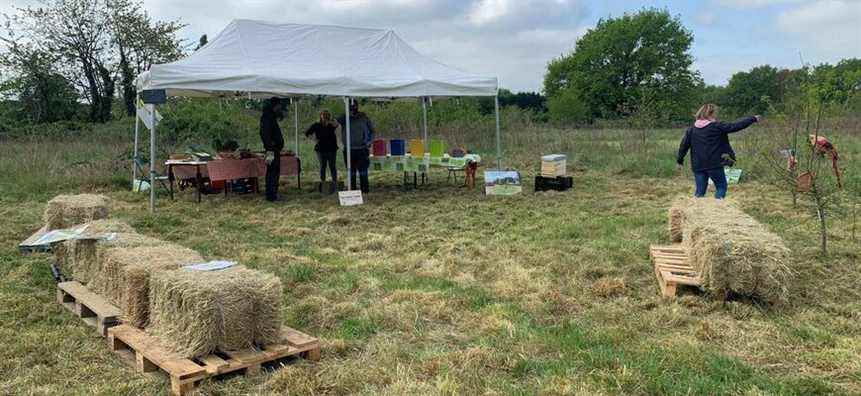In Lafter World War II, many quarries are created to rebuild the houses or roads destroyed by the bombardments. So companies, such as Patin, dig everywhere in Seine Maritime to obtain stones.
The The Seine will then, by infiltration, fill these abandoned quarries and create water points. This is why there are many artificial lakes in the region and in particular in the town of Cléon, Lake Patin on which the event is organized.
Unlike Lac de Bédanne, well laid out for walkers and where you can practice water sports, the Lac Patin is left as wild as possible by the municipality.
David Vattier, Living Environment Manager for the city of Cléon explains this choice:
“The municipality has chosen to leave this rather pungent vegetation, of brambles, to let the wildlife develop”
The lake is therefore surrounded by thick vegetation and the paths are narrow but bucolic. An ideal setting to receive children from surrounding schools and introduce them to local biodiversity through activities on the theme of the “five senses”.
Children are thus invited to put their hands in boxes to touch moss, sand, mulch… and put words to what their fingers brush. Or even to smell boxes containing aromatic herbs and name them simply thanks to their nose.
It’s not always a great success, but many breeders manage to do it all the same.
Mélissa, a CM2 student, goes even further:
“This plant, my aunt has it in her garden. You can make herbal teas against stomachache… But I can never remember the name!”
“Sage“, replies the host, complimenting her: the honor of the group is saved.
In the morning, they also go to the shores of the lakes to observe wildlife, in particular the various birds that a beotian could qualify as “ducks”.
But Maelys remembered the difference well:
“A water hen has an orange nose, while a coot has a white nose”
She had only come to this lake once, when she lives in the town, after the first confinement of 2020. She seems delighted to come back here and find out more about this place that she has discovered in the past.
But the highlight of the morning is indeed the discovery on the edge of the lake of a eco-grazing, a technique that consists of using animals to maintain a plot. This is a small enclosure where three somewhat shy goats graze.
David Vattier sinks into the stems of Japanese knotweed, a plant from the bamboo family, to attract goats near children. He is very difficult to get rid of this invasive species so the best way is still to have it tasted by the three horned friends which will gradually eradicate this plant which threatens to kill the local flora.
– Alexis Coignard
A way to discover your environment in a playful way. For David Vattier
“We have this habit of going to see biodiversity abroad, while in the municipality we have a biodiversity that is very little known!”
A successful bet, it would seem, for this first welcome morning. Yannis, in CM2, just regrets not having seen Pépère use his horns more aggressively!
A program open to all if your child does not have a visit planned with his school, nothing prevents you from going there.
For the rest of the week: Discovery trail, exhibitions, readings, hiking-readings and treasure hunts. Complete program on the website of the town of Cléon.
